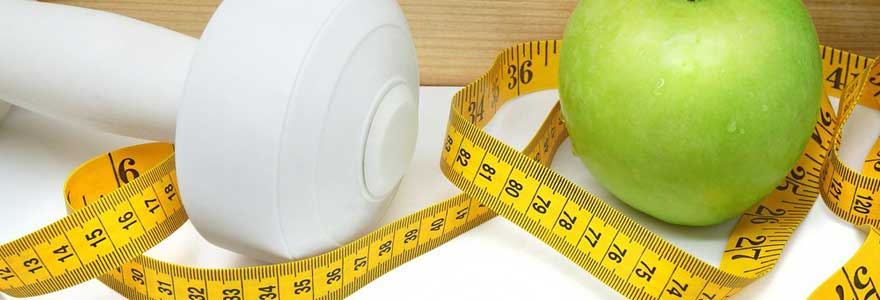Dieting is the practice or habit of eating (and drinking) in a regulated fashion, usually with the aim of losing weight. It is also used in some cases to gain weight or to regulate the amounts of certain nutrients entering the body.
History of Dieting
The practice of dieting in order to lose weight is ancient in its origins. Throughout the 17th and 18th centuries, physicians and patients regulated their food carefully, in order to prevent disease. The scientific classification of foods was broken down into proteins, carbohydrates, starches and lipids. Doctors and scientists began experimenting with targeted diets in the 19th century.
William Banting is one of the first people known to have successfully lost weight by dieting, circa 1863, by targeting carbohydrates. (The low carbohydrate diet, marketed today as the Atkins Diet, remains popular today.)
What dieting is not
Certain religions, such as Judaism and Islam, impose strict restrictions on food choices and preparation. These restrictions, however, are not usually considered "dieting."
Vegetarianism is usually not considered "dieting," as it is most often adopted for religious, spiritual or ethical reasons, or in some cases because other food choices are not available.
Anorexia nervosa and bulimia, which are psychological and neurological disorders that cause victims to endanger their lives with calorie restriction, must not be confused with dieting.
Dieting techniques
Most typically, "dieting" means eating in a carefully planned way in an attempt to reduce excess body fat and decrease bodily measurements, such as clothing size.
There exist a (sometimes confusing) multitude of weight loss techniques, many of which are ineffective. What works for one person will not necessarily work for another, due to metabolic differences and lifestyle factors.
Scientific principles surrounding dieting Successful weight loss diet is all about energy in versus energy out. If a person takes in less food energy than he or she expends over a period of time, the person may burn fat and subsequently lose weight.
Diets affect the energy in component of the energy balance by limiting or altering the distribution of foods. Techniques that affect the appetite can limit energy intake by affecting the desire to overeat. This can be attempted by focusing on foods that are filling, through the use of certain appetite-suppressing drugs, or through activities such as mild exercise, that affect appetite. Other techniques address habitual or emotional eating.
Affecting the energy out component is the focus of fitness and exercise programs. These might also be included in a comprehensive "diet."
Dieting in order to lose weight does just that -- you lose weight, water, some fat and muscles. Since muscles are denser, you lose a lot of weight, but little in size. Fat is bulkier, so a three pound fat loss can cause a size loss.
To lose a pound of fat, one must create a caloric deficit of approximately 3,500 calories (37,600 kJ per kilogram of fat); therefore, if a person creates a deficit of 500 calories per day, the person will lose approximately 1 pound of fat per week (5,400 kJ per day to lose a kilogram a week).
Muscle-loss during weight-loss can be restricted by regularly lifting weights and by a high protein intake. (It is said that 0.8 to 1.0 g of protein per pound of body weight (1.76 to 2.20 g/kg) per day is sufficient.)
Weight loss groups There exist both profit-oriented and non-profit weight loss organizations who assist people in their weight loss efforts. (Examples of the former include Weight Watchers and Jenny Craig; examples of the latter include Overeaters Anonymous and a multitude of non-branded support groups run by local churches, hospitals, or like-minded individuals.) These organizations' customs and practices differ widely, but most all of them leverage the power of group meetings with regards to counseling, emotional support, problem-solving, and the passing along of useful information. Some advocate certain prepared food or special menus, while others train how to make healthy choices from menus and while grocery-shopping.
Fad diets
Many 'fad' diets become widely popular for a short period of time, only to fade out. Although some fade from popularity due to being ineffective, some merely lose the public's interest. Judging their nutritional merit can be especially difficult given that most diet proponents locate medical professionals to back up their work. Examples of such fads include the grapefruit diet, low-fat diets, and Atkins.
Most fad diets emphasize a technique for accelerating natural fat loss over the basic nutritional idea of energy balance, or ignore it completely. The energy you take in (in the form of calories in food, whether fat, protein, or carbohydrate) must be less than the energy you burn in order to lose weight, so that your body burns fat to make up the energy deficit. If you take in more energy than you burn, your body will tend to store this excess energy as fat.
Grapefruit diet
On the grapefruit diet, the consumption of grapefruit with each meal was said to increase the metabolic rate, burning fat and enabling rapid weight loss. The grapefruit diet was eventually found to be entirely ineffective.
Low-fat diets
Low-fat diets were popular during the '80s and '90s, encouraging people to eat foods low in fat (or without fat altogether) and instead eat foods high in carbohydrates. The diet worked on the principle that of the three main macro-nutrients (fat, carbohydrates and protein), only fat was the one which would cause weight-gain. This failed as people ended up eating excessive amounts of low-fat foods rich in refined carbohydrates and sugar, and so did not lose much weight, or even gained it due to the energy from the carbohydrates.
Atkins
Atkins encourages controlling carbohydrate intake, and encouraged meats, nuts, unsweetened fruits, berries and green vegetables. This causes rapid weight loss for many people, although it continues to be disputed whether this is due to a metabolic advantage of ketosis, as Atkins claimed. Some of the initial rapid weight loss is due to depletion of glycogen stores in the liver. Glycogen must be associated with several times its weight of water in the body. Low carbohydrate diets have been shown to reduced the fasting levels of triglycerides. Elevated triglycerides are a demonstrated risk factor for heart disease and also account for part of the risk of low density cholesterol due to their associated worse particle size profile. Any successful diet for losing weight will cause some ketosis, since ketones are produced when the body is using fat energy to synthesize glucose (gluconeogenesis) during the long overnight fast (sleep). Elevated levels of fasting triglycerides (TGs) are the product of de novo lipogenesis (synthesis of new fats) from glucose substrate. If the liver was engaged in gluconeogenesis from fat, and synthesizing fat from glucose at the same time, this would be a futile cycle, and a fantastic way to waste energy and lose weight. For most of human history, it has been important to survival to avoid such inefficiency, so the body switches modes to avoid this futile cycle. This explains the dramatic reductions in fasting TGs seen in many low carbohydrate dieters.
Medical diets
Medical conditions often require the use of a special diet that either contains or lacks certain chemicals. For example, a person who has diabetes is often on a diet designed to carefully regulate their blood sugar level, sufferers of celiac disease must follow a gluten-free diet, the lactose-intolerant omit milk and dairy products, and people with kidney disease must follow a strict low-sodium diet to ease the strain on their kidneys.
Treatment for mild hypertension includes a diet rich in fruits, vegetables, and fat-free dairy foods, and low in fat and sodium, to lower blood pressure.
Very Low Calorie Diets
The Very Low Calorie Diet, or VLCD, is a special diet to be undertaken with medical supervision. It offers rapid fat loss over a short timeframe, but can be dangerous for some people. It consists of the consumption of a special powder mixed in with 200-300 ml of water to be taken three times a day. The drink, similar to a milkshake, provides approximately 1914 kJ (456 Cal) of energy per day when consumed at breakfast, lunch and dinner. It contains all necessary vitamins and minerals, although there is a risk of overdosing on selenium if a person consumes more than they should (more than three times per day). VLCDs should only be used for dieting when a person's body mass index exceeds 30. In addition, at least two liters of water must be consumed per day and a person should consider using fiber supplements regularly. Without this, the person risks severe constipation.
VLCDs can be very successful, but only when used over a six- to 12-week period. Because the body is essentially starving, it is burning up its fat stores and lowering its metabolic rate. As soon as the diet ceases and normal food is consumed again, there is an immediate increase in weight. Short-term use of VLCDs (one to four weeks) will have little, if any, benefit for the dieter, as the increase in weight will negate the weight lost in the first place. Once the full course of the diet is finished, it is up to the successful dieter to maintain their current weight, via exercise and sensible eating, otherwise they will put on weight again. VLCDs put a great deal of strain on a person's body, and should only be undertaken with medical consultation.
Potentially hazardous dieting techniques
Yo-yo dieting is particularly dangerous and ineffective, because it decreases the metabolism, leading to an immediate weight gain once the caloric restrictions are eased.
Many over-the-counter (OTC) and prescribed medications have been proven to be extremely hazardous to the health and consequently withdrawn from sale, so consumers need to be wary.
While anyone can lose weight by fasting (temporarily stopping one's food intake altogether), it is an extremely dangerous practice. When concentration camp survivors, who involuntarily suffered famine as a result of the horrendous living conditions, were examined by doctors, what little weight they had was mostly fat, with practically no muscle.
The only "safe" method of weight loss is to eat a sensible healthy diet with a moderately decreased caloric intake from your normal diet, and to increase exercise gradually until weight loss results. It should be noted that people may follow these guidelines and not actually lose weight, but may see health improvements.



